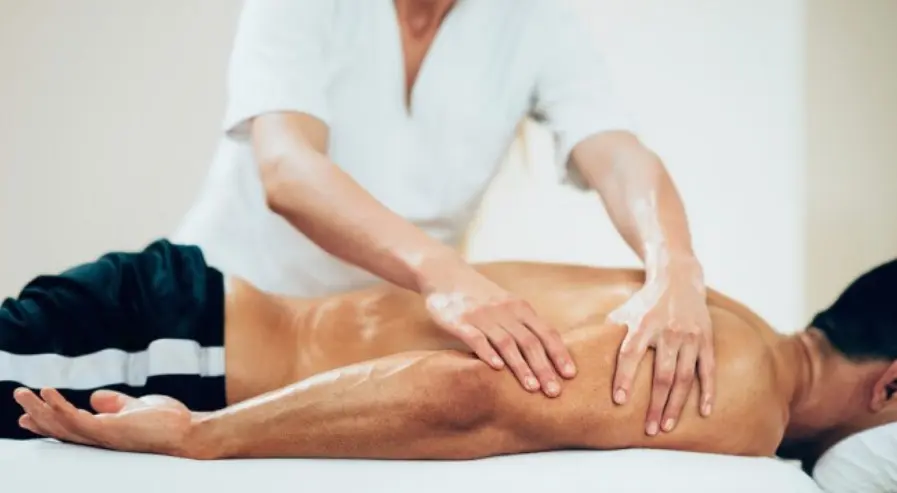When it comes to pushing limits and sculpting a resilient, high-performing body, recovery often takes a backseat to relentless training. But what if the secret weapon to unlocking peak performance isn’t more reps or longer runs – but better recovery? Among the most effective yet underrated tools in the fitness world is therapeutic massage, especially when integrated into comprehensive wellness services that support the body through every stage of training and recovery.
From enhancing circulation to easing mental tension, massage therapy does more than feel good – it builds a stronger, more responsive, and better-balanced athlete. Here’s how.
The Recovery-Peak Performance Connection
Recovery isn’t just a break from movement; it’s when growth happens. The human body rebuilds and strengthens itself during rest, not during the grind. And this is where therapeutic massage becomes essential.
Massage boosts blood flow, helps flush out metabolic waste, and promotes muscle pliability. This gives sore tissues the nutrients they need to heal efficiently and prepares the body to perform better in the next session. Think of it as hitting the reset button for your muscles – only better.
Flexibility and Mobility: The Hidden Heroes
Mobility work is trendy for good reason, but massage takes it a step further.
Loosening the Chains
Tight fascia (the connective tissue that wraps around muscles) can restrict movement and increase injury risk. Massage helps release fascial adhesions, which not only increases flexibility but also improves functional movement during training.
Posture Realignment
A therapeutic massage can correct postural imbalances that develop from repetitive motion or desk-bound days. This kind of realignment enhances range of motion and optimizes body mechanics – key for exercises like squats, deadlifts, or overhead presses.
Pain Relief Without the Pills
Sore from that leg day? Instead of popping ibuprofen, a sports massage might be just what you need.
Natural Pain Management
Massage triggers the release of endorphins and serotonin – your body’s natural painkillers and mood boosters. These biochemical responses ease discomfort and improve your mindset, helping you stay consistent in your training program.
Delayed-Onset Muscle Soreness (DOMS) Relief
That deep ache 24-72 hours after working out? It’s common, but it doesn’t have to be crippling. Massage reduces DOMS intensity by stimulating lymphatic drainage and reducing inflammation.
Fun Fact: Studies show that just a 10-minute massage post-workout can reduce soreness by up to 30% – a small investment for a major return in training quality.
Performance Gains: More Than Just Muscle
While the physical effects are well-documented, massage therapy also provides cognitive and emotional benefits that elevate athletic performance.
Sharper Focus and Lower Stress
Stress affects everything – recovery, sleep, decision-making, even reaction time. Massage reduces cortisol (your stress hormone) and promotes relaxation, enabling sharper focus and better sleep, which translates into stronger workouts.
Interesting Tidbit: Olympic athletes often schedule massages before big events, not just to prime their muscles, but to mentally reset and boost confidence.
Enhancing Mind-Muscle Connection
A well-trained body is nothing without a well-tuned mind. By increasing body awareness, massage helps athletes better identify tight or overused areas and adjust form or training strategy accordingly.
Injury Prevention: The Smart Athlete’s Strategy
You can’t chase gains if you’re sidelined with injury. Massage helps spot and solve small issues before they become major setbacks.
Identifying Muscle Imbalances Early
Therapists can often detect subtle tightness or compensation patterns you might not notice. Early intervention allows for corrective strategies that prevent chronic injuries like IT band syndrome or rotator cuff strains.
Supporting Joint Health
By reducing tension in surrounding muscles, massage reduces pressure on joints and improves overall biomechanics – critical for injury-free lifting and running.
How to Incorporate Massage Into Your Training Plan
Consistency is key in any fitness journey, and incorporating recovery strategies after high-intensity workouts helps prevent burnout and maximize performance. Adding massage doesn’t mean weekly spa days (although that doesn’t sound bad). Even periodic sessions can make a big difference.
Here’s how to make it work:
- Post-Workout Recovery (1–2x/month): Great for reducing soreness and keeping muscles supple.
- Pre-Event Preparation: Stimulates blood flow and reduces anxiety before big races or competitions.
- Active Recovery Days: Instead of total rest, a massage session can promote circulation and speed healing.
Pro Tip: Combine massage with hydration, sleep, and proper nutrition to create a recovery trifecta your body will thank you for.
The Takeaway: Train Smarter, Not Just Harder
Massage isn’t a luxury – it’s a performance tool. From soothing sore muscles to improving your mental game, it amplifies every aspect of athletic development. If you’re serious about reaching your fitness goals, integrating therapeutic massage into your routine could be the most enjoyable strategy you adopt.
Remember: lifting heavier, running faster, or going harder only counts if your body can handle it – and that’s where massage earns its place in your recovery arsenal. Make it a habit, not a reward, and you’ll come back to every session stronger, more resilient, and more prepared to crush your goals.
Also read-Live Beautifully Transform Your Home With Interior Design That Matches Your Life
